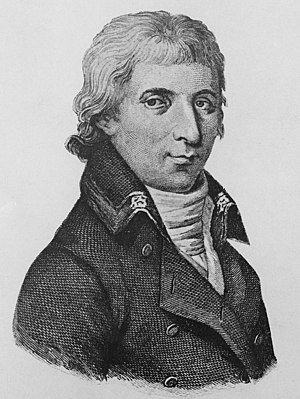Day-O! Jamaican Bananas, Jamaican Resistance
The banana holds a tale of struggle and resilience, of economic revolution and cultural pride woven into the fabric of Jamaican history.
Origin of the Banana in Jamaica
Nicolas Baudin of France
During the colonial era, French naturalist Nicolas Baudin took corms of the Gros Michel variety of banana, often translated as, “Big Mike,” from Southeast Asia to Martinique in the late 1700s. It was then said to have been brought to Jamaica by French botanist Jean Francois Pouyat, who settled in Jamaica in 1820.
Sugar: A Backdrop of Colonial Exploitation
The sugarcane plantations dominated the industry of Jamaica from the 1600s, with British colonizers exploiting enslaved Africans and their descendants for hundreds of years. The conditions were brutal, and enslaved people spent long hours in the hot fields cutting sugarcane by hand. Many died from being overwork, contracting disease, or even suffering malnutrition among other brutalities. Under the brutal conditions, Jamaica became one of the most profitable sugar-producing colonies in the British Empire. By the 18th century, the island was exporting millions of pounds of sugar each year. The profits from sugar enriched the British planters and merchants while coming at a great cost to those enslaved who were forced to produce it.
"Sugar cane plantation; [Jamaica.]" Schomburg Center for Research in Black Culture, Jean Blackwell Hutson Research and Reference Division, The New York Public Library.
Banana wilt by Brandes, Elmer Walker, 1919. Library of Congress.
Bananas as a Beacon of Resilience
Following the fall of formal institution of slavery in 1838, newly emancipated Jamaicans sought autonomy beyond the oppressive grip of sugar plantations and their indentured servitude. They turned to the banana, a crop that could flourish on small plots. Formerly enslaved Jamaicans spearheaded the growth of the banana trade, and their earnings reduced their reliance on sugar plantations. Sugar plantation owners felt threatened by the potential loss of cheap, exploitative labor and initially opposed the banana trade, but the fruit's swift growth, ease of cultivation, and burgeoning demand as a foreign export proved formidable.
By the 1900s, Jamaicans witnessed the explosive expansion of banana plantations, driven by exports to North America and Europe. Bananas had blossomed into Jamaica's golden ticket, with small farmers playing a pivotal role. However, as the foreign demand for bananas grew, a storm brewed on the horizon for local producers – the arrival of multinational corporations such as the United Fruit Company. These behemoths, wielding immense power and resources in production, shipping, and marketing throughout the Caribbean, cast long shadows over Jamaican farmers.
Railway Map of Jamaica, 1920s. Transportation Department of the United States Department of Commerce
A crucial player in the banana boom was the railroad system. The system was expanded throughout the 1900s, mainly for the purpose of bringing products to the ports of Kingston, Port Antonio, and Montego Bay. Expansion of the railway in the late-19th century opened up the interior of the country to farming and the establishment of banana and citrus plantations. This expansion allowed greater transportation of bananas from plantations to ports, making it easier to connect rural areas to global markets.
Branch lines sprouted, reaching into new banana-growing regions. By the 1950s, the network boasted over 298 kilometers of track, crisscrossing the island from its southeast to the northwest and northeast edges.
Gathering bananas, Jamaica, The Encyclopedia of Food by Artemas Ward 1923
lanting Seeds of Self-Determination
The crowded audience at the Great Meeting of the People of Jamaica held under The Jamaica Banana Producer’s Association Ltd. in the Ward Theatre, Kingston, July 18th, 1935. For educational use only. JMCC is a 501(c) (3) nonprofit organization.
The 20th century saw a fierce battle for fair pricing and control. In 1929, Jamaican farmers, determined to protect their industry, took a monumental step – birthed the Jamaica Banana Producers' Association (JBPA) under the leadership of Rev. A.A. Barclay of St. Mary. With the goal of farmers being able to negotiate sustainable export contracts, they soon expanded to include other agricultural products. Their initial membership saw 6,145 growers, notably supported by the Pringle family, Jamaica’s largest banana producers at the time. They set a precedent for others to start contracting their fruit to JBPA. This cooperative became a defiant stance against the United Fruit Company, and the co-operative aimed to combat the looming monopoly on their industry. In the 1930s, the cooperative saw their subsidiary, Jamaica Banana Producers Steamship Company, become the first shipping line in history to be 100% Jamaican owned.
In the time since then, the banana industry has seen a general decline, with slumps attributed to the Panama Disease in the earlier part of the 1900s, and weather events such as Hurricane Gilbert in the 1980s, which devastated acres upon acres of banana farms.
Damage after Hurricane Gilbert September 1988 by PvdV
Fallen down trees by Hurricane Gilbert, near Reading on main road Montego Bay September 1988 by De Geo
Day-O!
The banana's influence transcends economics, pulsating through the music, language, and Jamaican culture. The bygone era of the banana industry’s peak was memorialized in the poem and song, Day-O (The Banana Boat Song). It was originally sung by Jamaican dockworkers, who worked nights and waited for daylight to arrive so that their bananas could be counted before they got to return home.
The song was first called, “Day Day Light,” recorded by Trinidadian singer Edric Connor on his 1952 album, “Songs from Jamaica.” Louise Bennet also recorded a version, along with others Jamaican Folk songs. The song was reworked by songwriter Irving Burgie, whose version was popularized worldwide with Harry Belafonte’s voice, hitting the Billboard at #5 and helping the Calypso album become the first full-length album ever credited with selling 1 million copies in the United States.
The infectious rhythms of "Day-O (The Banana Boat Song)" captured the vibrant resilience of banana workers and the legacy of colonial and imperial resistance of Jamaican banana growers, all memorialized in the song. It has become a symbol of both resilience and prosperity.
The next time you peel banana, remember the remarkable journey it has taken from the shores of South Asia, to the sun-drenched land of Jamaica, where it has fueled dreams of freedom and defiance.
Sources
Banana Wilt—Banana plants of the Gros Michel variety in Costa Rica attacked by the wilt organism. (1919). https://archive.org/stream/bananawilt00bran/#page/n5/mode/1up
Damage by Hurricane Gilbert Reading Jamaica 1988 by De Geo. https://commons.wikimedia.org/wiki/File:Damage_by_Hurricane_Gilbert_Reading_Jamaica_1988.jpg
Forsythe, H.G. Railways of Jamaica: an Outline History. Kingston: The Jamaica Historical Society, 1980.
Gathering bananas, Jamaica, photo from The Encyclopedia of Food by Artemas Ward. https://commons.wikimedia.org/wiki/File:Gathering_bananas,_Jamaica,_photo_from_The_Encyclopedia_of_Food_by_Artemas_Ward.jpg
Harry Belafonte in Concert (Japan, 1960), Recorded live at Sankei Hall, Tokyo, 18 July 1960. This song was first featured on the studio album "Calypso" (1956).
Huntley Film Archives Jamaican Banana Harvest, 1950s - Film 96894
Jamaica Timeline - The Banana Industry. https://jamaicatimeline.com/industry/banana.html
Jamaicans.com - Did you know Jamaica was the first country in the Western Hemisphere to produce bananas commercially?
NPR - Irving Burgie, Songwriter Who Helped Bring Calypso To America, Dies At 95
Railway Map of Jamaica. produced in the 1920s by the Transportation Department of the United States Department of Commerce
Remnants of a coconut grove after Gilbert struck Jamaica by PvdV. https://commons.wikimedia.org/wiki/File:Remnants_of_a_coconut_grove_after_Gilbert_struck_Jamaica.jpg
Schomburg Center for Research in Black Culture, Jean Blackwell Hutson Research and Reference Division, The New York Public Library. "Sugar cane plantation; [Jamaica.]" The New York Public Library Digital Collections. 1909. https://digitalcollections.nypl.org/items/510d47df-94a7-a3d9-e040-e00a18064a99










